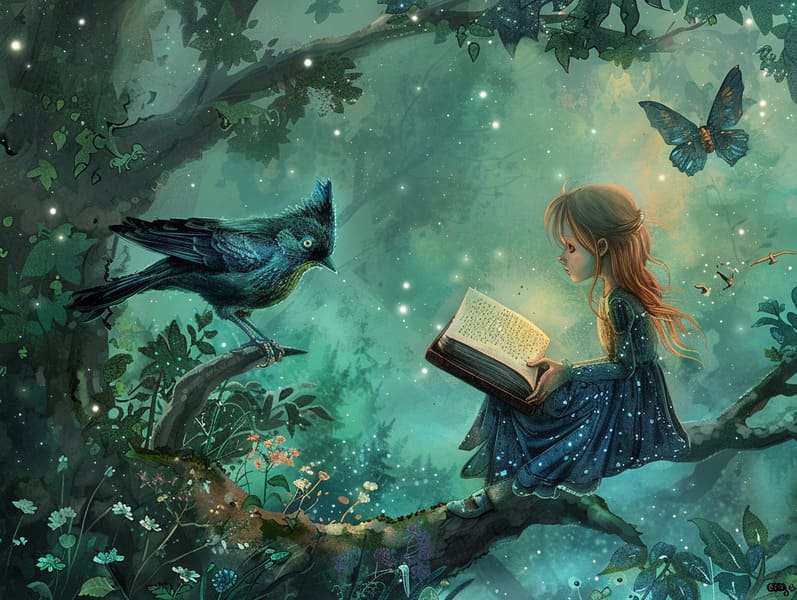Tracing the Heritage of Historical Fairy Tales with the Everlasting Delight.
Tracing the Heritage of Historical Fairy Tales with the Everlasting Delight.
Blog Article

Best fairy tales have deep roots. These narratives have been shared from one generation to the next long before they were ever written down. They developed from a variety of backgrounds, including Indigenous traditions. They were initially shared among elders, often carrying themes and messages reflective of the societal norms and beliefs of the time.
The renowned Brothers Grimm, Jacob and Wilhelm Grimm, were among the first to gather many of these beloved fairy tales. Their compilation, "Grimm's Fairy Tales," included narratives like "Cinderella," "Hansel and Grethel," and "Schneewittchen," which have since become essentials in the world of famous fairy tales. Similarly, Andersen's delightful narratives, such as "The Mermaid," and "The Duckling's Story," have enchanted hearts worldwide, ensuring their place in the pantheon of treasured fairy tales.
Despite being ancient, traditional fairy tales remain as applicable as ever, especially as bedtime stories for kids. These enchanting tales are now available in many formats, including beautifully illustrated books, fantastical animations, and digital storybooks.
Their unwavering allure can be connected to several whimsical characteristics:
Moral Lessons: Classic fairy tales often illustrate important moral lessons. Stories like "The Tale of the Boy Who Cried Wolf" teach the virtue of honesty, while "The Story of the Tortoise and the Hare" exemplify the values of tenacity and meekness. These tales offer children clear distinctions between virtue and vice, guiding their moral compass in a kind yet significant way.
Compassion and Insight: Old fairy tales frequently involve protagonists facing problems and hurdles, motivating listeners to identify with their struggles and applaud their triumphs. For instance, "Beauty's Beast" teaches us the necessity of seeing inner beauty to realize the true character of a character, advancing warmth and discernment.
Cultural Understanding: Many old fairy tales are rich in the cultural contexts from which they were born. Understanding these stories can provide informative snapshots into different heritages, promoting a sense of world appreciation and appreciation.
Fantasy and Innovation: The enchanted elements in old fairy tales—wizardry and magic—invigorate children’s inventiveness. These narratives carry readers to enchanted realms, triggering creative ideas and a sense of magic that endures a lifetime.
Old fairy tales are not only fascinating but also instructive. They provide bewitching tools in cultivating various intellectual and emotional capacities in little ones. When timeless fairy tales are spoken out loud, they develop verbal skills by teaching new language items and detailed sentence structures. This practice also enhances listening abilities and mindfulness, as young readers track the narrative, anxious to see what happens next.
Furthermore, discussing the themes and characters of classic fairy tales can nurture critical thinking and evaluative skills. Children are instructed to spot patterns, guess what will happen, and get cause and effect. These examinations also assist kids speak out their thoughts and feelings, fostering their emotional intelligence.
In today’s digital era, the presence of free fairy tales online has made these stories more attainable than ever. Online resources and software make available broad selections of famous fairy tales that can be enjoyed or listened on anytime, anywhere. Fairy tales spoken are particularly well-received, offering an captivating way for young readers to immerse in these charming tales. Read-aloud books and spoken videos take characters and settings to life, often supported by magical soundtracks and musical scores that augment the narrative journey.
The timeless fascination of traditional fairy tales lies in their ability to shift to current times while retaining their core messages. Contemporary revisions of these stories often incorporate more representative protagonists and modern settings, making them meaningful to today’s audience. However, the fundamental themes of guts, understanding, and even-handedness remain unchanged, continuing to influence children of all ages.
Old fairy tales also offer a sense of comfort and familiarity. They confer a orderly narrative with a apparent beginning, middle, and end, often wrapping up with the solving of conflicts and the triumph of righteousness over wickedness. This uniformity can be calming for children, presenting a sense of invariability in an fluid world.
Timeless fairy tales continue to enthrall and educate new generations, maintaining their splendor and pertinence in modern society. As children's night stories, they deliver a perfect blend of charm and understanding, promoting moral values, empathy, and creativity. The accessibility of online fairy tales and the sought after status of fairy tales told out loud warrant that these old tales remain attainable to new generations.
By safeguarding and telling these narratives, we continue to commemorate the rich tapestry click here of inventiveness and cultural heritage. Whether you are enjoying a artistically illustrated book, perusing a electronic library, or listening on an voice book, the enchantment of timeless fairy tales is always within reach. These fairy tales illustrate of the invariable spell of storytelling and its ability to hold us together across epochs and places.
Even if you are exploring a vibrantly illustrated book, perusing a electronic library, or listening via an spoken story, the grandeur of children's fairy tales is always within reach.
These fairy tales show us of the everlasting power of narratives and its ability to tie us across generations and cultures, casting a charm that captivates and teaches alike.